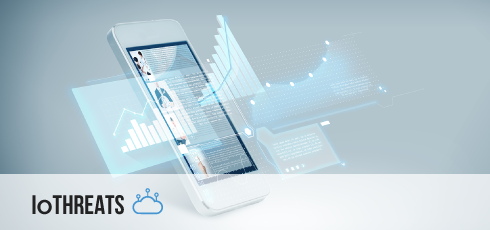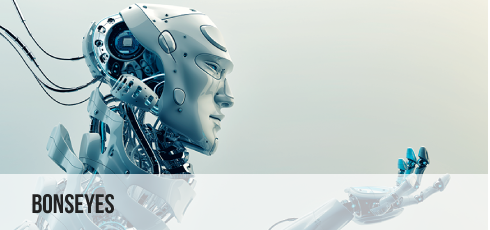Areas of Interest
Data Economy and Artificial Intelligence
In the same way as data in society steadily increases, where any aspect of citizens, companies and governments, becomes increasingly “datafied”, the same is occurring throughout research and science. While selected fields, such as biology, medicine and physics, have poured tremendous effort into the systematic saving and sharing of research data, laboratory results and other key components needed to post-validate the original results, other fields are lacking far behind. This results in significant amounts of collected and generated data to be lost, resulting in a significant duplication of work. Simply put, there is a strong need for efficient, cost effective sharing of high-quality, annotated research data that may be shared throughout the research community. That said, the different datasets need to be intuitively visualised, as multi-dimensional informational material to make both the navigation through the dataset more user-friendly, as well as in-depth visualisation of the individual datasets is needed to provide both the general public with insights into how their tax money has been spent and to researcher such that they are provided with immediate visual feedback with regard to what the data contains and the quality of the data.
Future Cities and Urban Research
Mobility and transport together form a key topic for society and economy in today’s world. Mobility is a fundamental need in modern society because it represents a prerequisite for economic success, social prosperity, and general satisfaction of different stakeholders and groups in society. This includes the transportation of people and goods, public transport and sustainable mobility plans. Thus, mobility facilitates growth, employment and sustainable development in all over Europe. Over the first years of the third millennium, transport-related data has experienced huge growth, from scarce to super-abundant. Data produced by scientific experiments/models, derived automatically from new systems or simply compiled from the now ubiquitous sources of automatic data collection through ordinary, embedded sensors (such as everybody’s smart-phone). This new reality of the “Big data” era, enabled by recent ICT improvement at several levels – has resulted in the need for innovative unconventional tools, and most importantly, a paradigm shift at several levels.
Future Care and Technology Impacts
In ageing societies, health care and wellbeing of older people is of increasing importance. Digitisation and emerging technologies such as exoskeletons and care robotics change the roles of caregivers and care receivers as well as the relationship between them. Therefore, a detailed analysis of potentials, impacts as well as challenges to be addressed in context of various use cases is of high relevance. Technologies have impacts both on the caregiver and the care receiver. Understanding barriers to acceptance that may prevent the potential users of novel technologies, assessing the cost-benefits balance of different interventions, or examining how different approaches affect equity, gender, and social inclusion are core objectives of the project among others. With the emergence and increasing application of various technologies, which aid the security, safety and wellbeing of older adults or support caregivers, and given the potential privacy intrusiveness of these solutions, it is key to discuss and develop criteria for ethics, information privacy. Further, given the increasing criticality and interconnectivity of various health devices and tools, e.g., remotely programmable peacemakers, computer security must be considered as a key building block.
Science Communication & Participatory Research
Science and research have a great impact on the public; and various social groups are interested in science. Without communication and presentation of results, scientific results stay invisible. It is therefore of great importance to communicate scientific results and outcomes of scientific projects to the public and especially to certain target groups, such as decision makers. For this, it is crucial to understand the various models about public understanding of science, public awareness of science and public engagement with science and technology. Based on this, handbooks and guidelines for successful science communication – especially with regards to specific target groups that may be difficult to reach – can be elaborated. Science communication can take place in very different forms: In social media (e.g. blogs, Twitter, Facebook), with the use of project websites, with the use of mass media, at science festivals etc. – there is a variety of possibilities; and each has their own advantages and disadvantages, as well as the potential to reach their own specific target groups. Therefore, these communication channels and their usefulness have to be assessed in order to create successful and meaningful science communication.
Cyber Security Challenges
Due to the recent terrorist threats and attacks as well as the global security challenges, the European Union needs to get a better understanding of terrorism, terrorism networks and recruitment pathways. Only by combining profound scientific knowledge with practical approaches and technological solutions, societies have the chance to fight terrorism. At the same time, organized crime incidents increased substantially and new forms emerged due to technological developments such as Crime as a Service. Hence, we also have to increase our insights and improve our capabilities for fighting and preventing organized crime (OC) and its drivers. At the same time, we also need to respect ethical issues and privacy. SYNYO has both experience and expertise on these issues, with a particular focus on cyber-related topics as well as on respective ethical questions.
Energy Efficiency
The use of ICT in the field of natural resource management bears an abundance of potentials to increase resilience, preserve biodiversity and sustain efficient use of food, water and energy. Urban systems allow, due to their relatively clearly defined system limits, a rather precise calculation of scarcities of and trade-offs between specific resources. Especially the interconnectivity between the three aforementioned resources underlines the need for a nexus-approach to meet future challenges in the field of urban resource-use.
Future solutions for these challenges will be built on a vast repository of precise and easily accessible data. Therefore, the COST action FWE-nexus aims to analyze and explore driver for publicly available data in the urban food-water-energy nexus. Governments, public institutions, but also the private sector shall benefit from the availability of relevant and individually tailored data. Because of its complexity, the FWE-nexus is not characterized by a single all-fitting solution, but rather by the need for an integrated approach in order to find individual solutions on how to provide food, energy, and water for a growing population without overwhelming the environment. Integrated and interconnected data and information will help to foster a more resilient urban FWE-nexus with less vulnerability to stresses induced by increasing urbanization, population growth and resource consumption.











